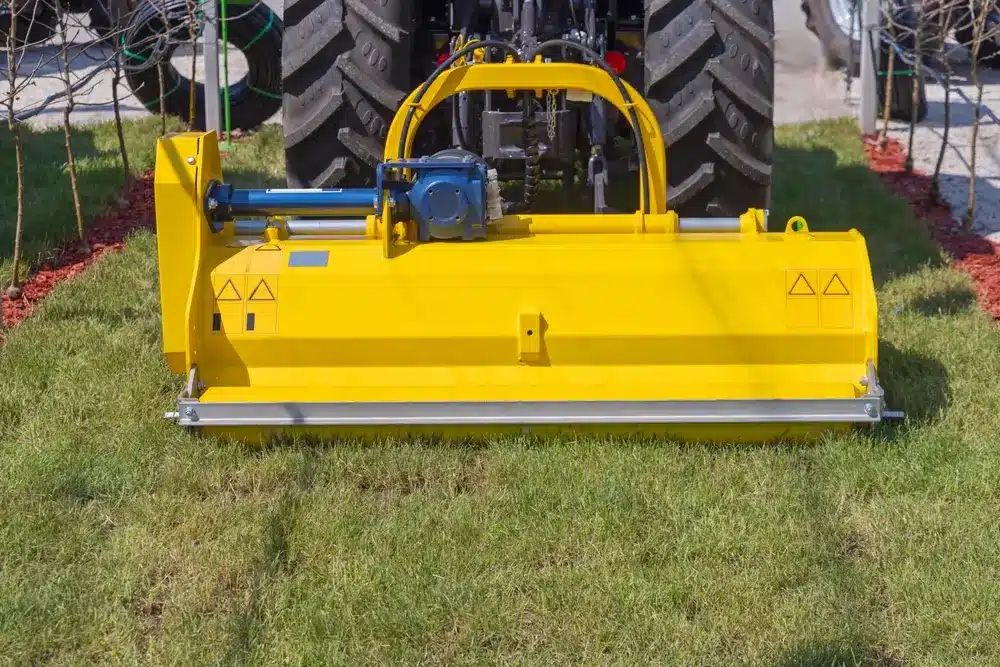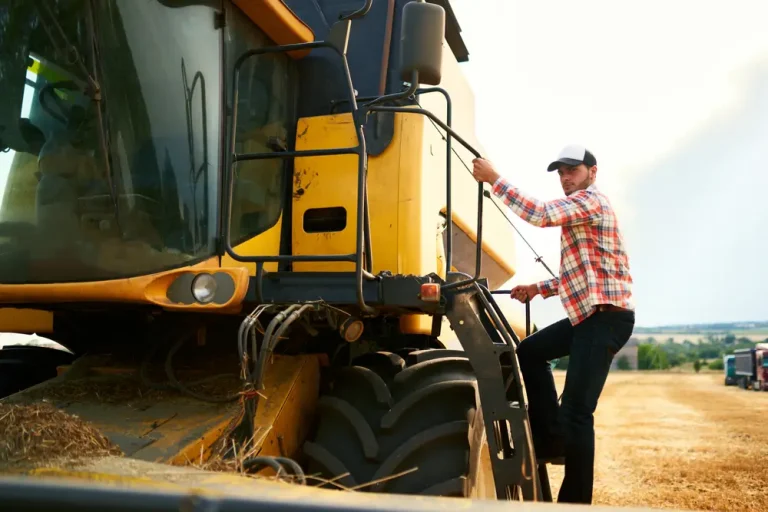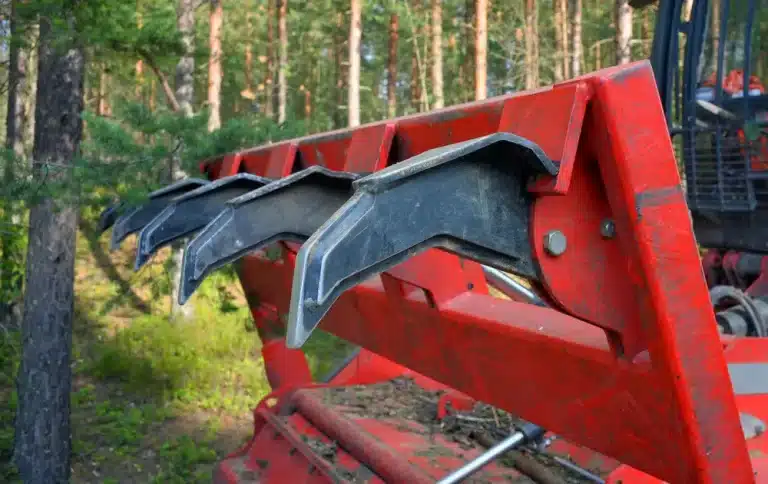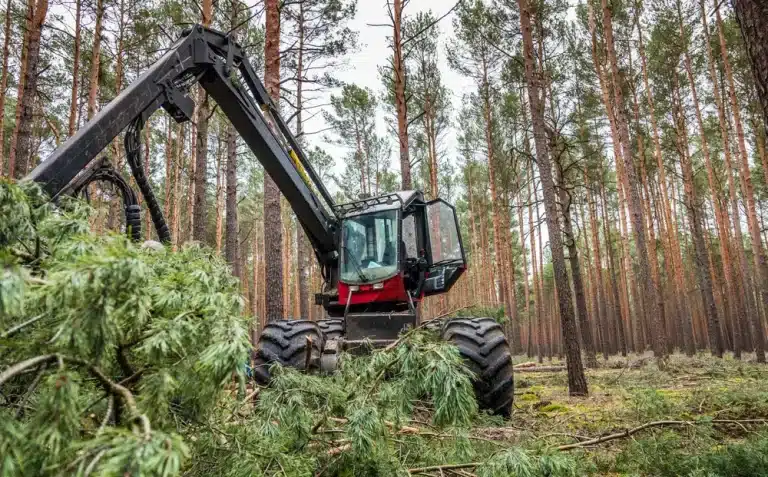Miss the right match between mulcher and tractor, and you risk doubling your work time or damaging terrain and vegetation. This guide compares the best forestry mulchers compatible with sub-100 hp tractors, tailored for southwestern France’s challenging soil and terrain.
What to expect from compact forestry mulchers ?
Top forestry mulchers in this category combine rugged construction with PTO efficiency and safety:
- Materials: High-tensile steel frames, reinforced blades, polycarbonate guards
- Cutting systems: Swinging blades (deck), fixed teeth (drum/disc), industrial rotors
- Safety features: Chain curtains, emergency shutoff switches, reinforced shields
- Mounting: Cat I–II 3-point hitches or universal skid steer brackets
- Tractor compatibility: Designed for PTO ranges between 35–90 hp
Models are available in 50″, 61″, and 72″ widths, with different rotors to handle brush, saplings, or even small trees.
Matching cutting performance to terrain
The performance of a mulcher relies on:
- Rotor type:
- Drum – Efficient on dense wood and mixed brush
- Disc – Faster on thinner vegetation, produces coarse mulch
- Deck – Lighter, ideal for grass and fine clearing
- Teeth configuration:
- Fixed carbide for hardwood
- Swinging hammer for green waste
- Reversible knife blades for cost efficiency
- Tractor synergy: Ensure power output matches mulcher demand. Underpowered tractors struggle to maintain cutting speed and balance on rough terrain.
- Balance: Weight distribution matters especially on inclines or loose soil.
Comparing efficiency across leading Mmdels
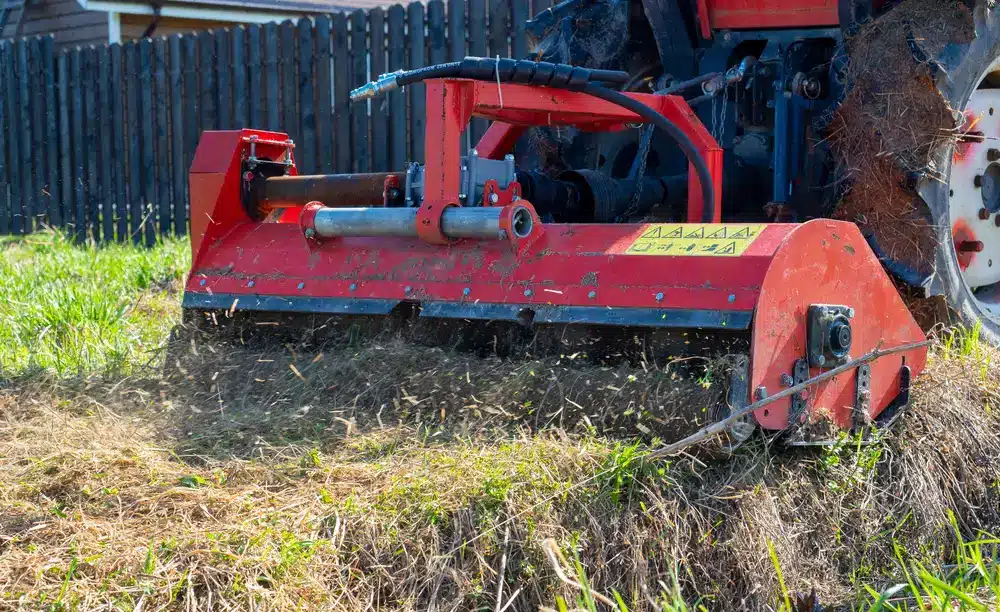
Here’s how top mulchers for <100 hp tractors stack up on output and fuel use:
| Model | Fuel Use (L/hr) | Work Output (ha/hr) |
| FAE UML/S/DT 85 | 8.5 | 0.70 |
| Seppi M. Miniforst | 7.9 | 0.60 |
| Loftness Battle Ax | 8.3 | 0.65 |
| Fecon BH74SS | 8.1 | 0.68 |
Models like the FAE UML/S/DT 85 lead in efficiency and productivity, especially for medium-density vegetation. Drum mulchers like the Loftness offer raw strength, but disc types perform better on slopes and lighter brush.
Field applications: which mulcher fits the job?
Mulchers in this range are versatile and ideal for:
- Clearing trails and firebreaks
- Maintaining orchards and vineyards
- Thinning woodlots or sapling removal
- Cleaning storm damage and fallen debris
| Tractor Power | Ideal Mulcher Weight | Example Models |
| 25–50 hp | 150–320 kg | FAE DML/HY, SEPPI MINI-BMS |
| 50–80 hp | 400–500 kg | Seppi Miniforst, Fecon BH62 |
| 80–100 hp | 500–600+ kg | FAE UML/S, Loftness 73 |
Select disc heads for orchard rows or tight spaces, drum rotors for mixed terrain, and offset models to work near trunks without damaging trees.
Top benefits for smaller tractors and budgets
Why these mulchers make sense for compact machines:
- Cost-efficient: Lower acquisition and operating costs than dedicated machines
- Fast ROI: One-person operation and shorter project times reduce labor
- Eco-friendly: No soil disruption, less erosion, and mulched debris returns nutrients
- Versatile: Swappable attachments allow one tractor to do multiple jobs
- Safe: Built-in shields, safety systems, and balanced designs reduce risk
Smaller mulchers also simplify transport, setup, and maintenance ideal for independent contractors and small landowners.
Best practices for setup and operation
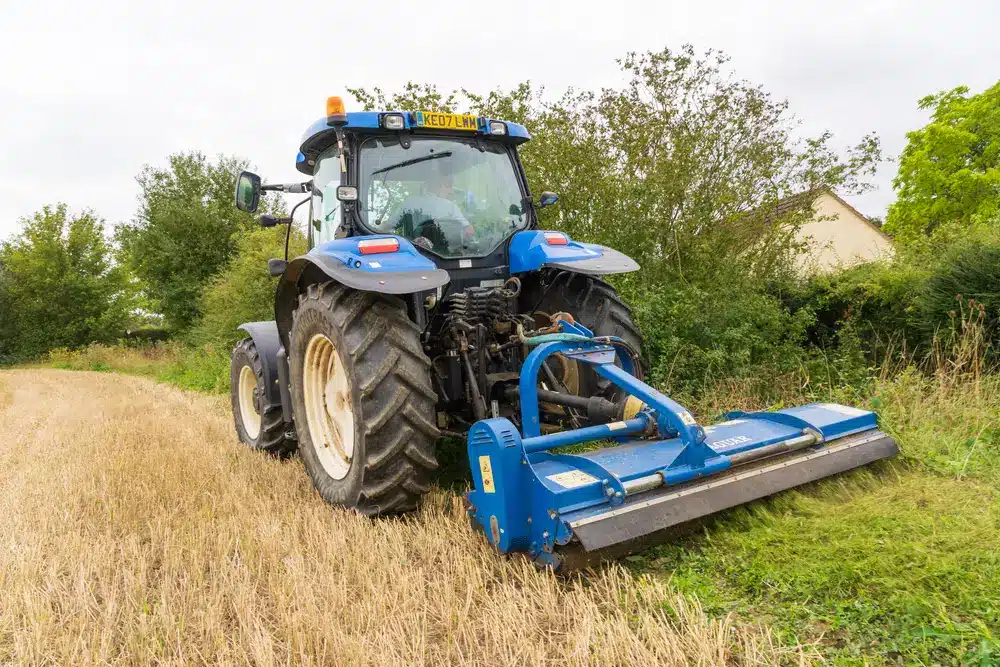
Keep your mulcher effective and safe by following these core practices:
Setup tips
- Match mulcher weight to tractor power
- Use skids or height control for rocky or uneven terrain
- Choose tooth type based on material: knives for green, hammers for hardwood
Maintenance
- Clean the mulcher after each job
- Inspect blades, belts, and bolts weekly
- Sharpen or replace teeth regularly
- Grease driveline and check for oil leaks
- Log usage and maintenance intervals for trend tracking
Operator training
- Teach safe startup/shutdown
- Emphasize correct height, speed, and load adjustments
- Train on identifying obstacles like buried rocks or uneven soil
- Record work output per job to refine future use
Final thoughts: mulcher fit matters more than brand
Don’t just chase the biggest specs or lowest price. Match the mulcher to:
- Your land type and vegetation
- Your tractor’s true PTO power
- The types of tasks you do most often
- The maintenance and parts access you realistically have
If you want, I can now help you create a comparison table of recommended models, or generate a printable buyer’s checklist tailored to your land type and budget. Just say the word.
